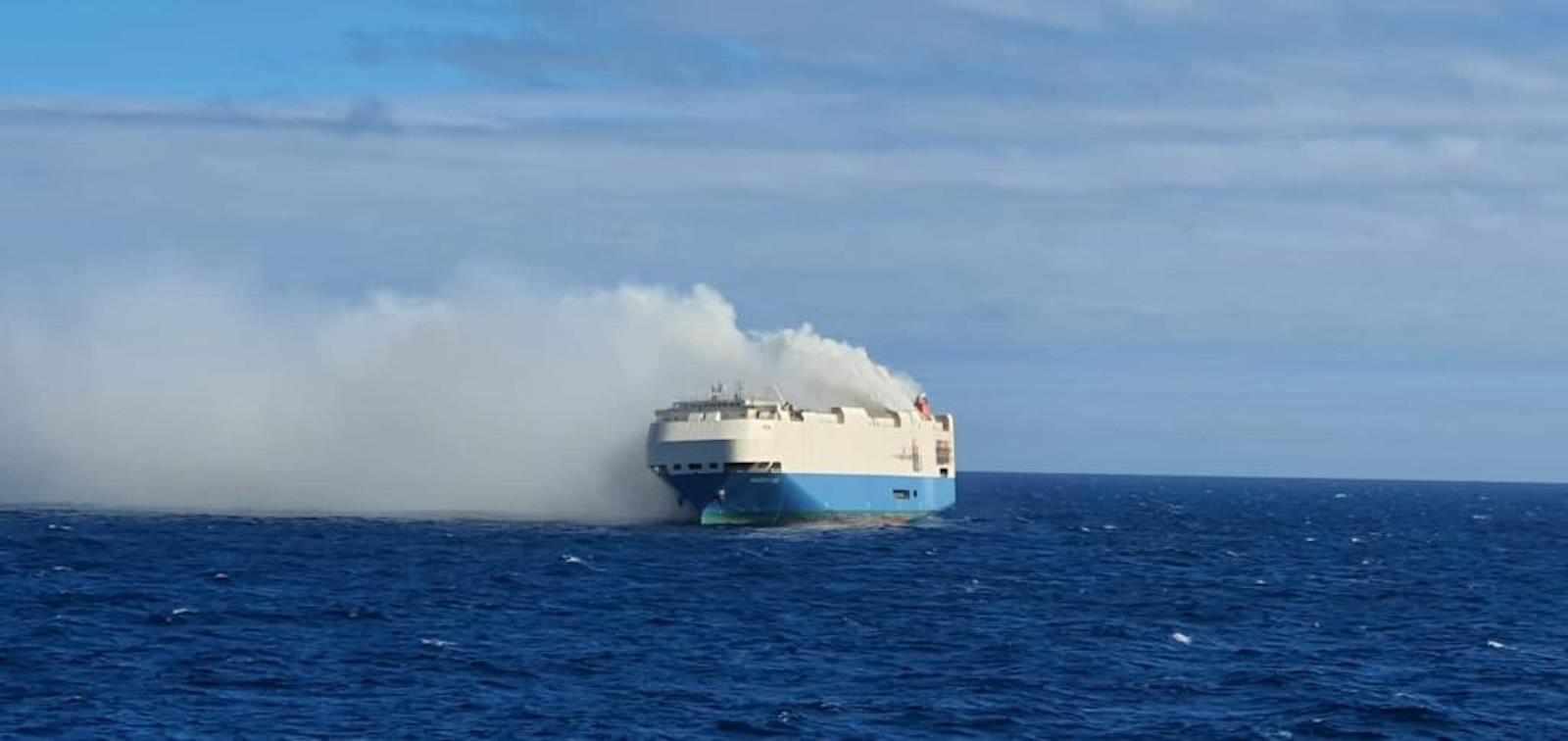
"Joao Mendes Cabecas, a captain of the nearby port of Hortas, told Reuters that lithium-ion batteries in the electric cars on the Felicity Ace caught fire, but it was unclear whether that is what started the blaze.
Last edited:


 gcaptain.com
gcaptain.com
I've been teaching firefighting of Li-ion and EVs since retiring from the NTSB, where I investigated a number of them in airplanes and cars. I'm also a member of one of the SAE standards committees for Li-Ion battery safety (J2990).#1 ...However it usually only happens when they are charging, or get hit hard.
#2 So my feeling is, charge them at a slow rate.
#3 Don't overcharge them.
I feel they are more suited to slow discharge, so I would mainly hook up LED lighting, charge cell phones and small laptops off them.
#4 Plus secure them in a protected location.
#5 And above all, monitor them as much as possible.
#6 If they start getting hot if safe gently disconnect them, wrap them in a protective cloth or bucket. Then carry them to a safe place where they can burn without spreading.
Absolutely right.The lithium ion batteries usually involved in thermal run away events that cause fires are different from the much safer LiFePO4 batteries people are putting in boats.
No.6 is actually the one thing I personally question,I've been teaching firefighting of Li-ion and EVs since retiring from the NTSB, where I investigated a number of them in airplanes and cars. I'm also a member of one of the SAE standards committees for Li-Ion battery safety (J2990).
www.HowItBroke.com
There's a mix of thoughts between small batteries and EV batteries, so:
Comment #1. About half of EV fires are evenly divided between those on a charger and those simply parked by themselves.
There are 2-3 portable Li-ion device fires in airliners per WEEK and none of those are on a charger. Vapes are so bad that the Navy banned sailors from having them on warships (not sure ifs still so)
#2 You can't control the rate for most.
#3 Rate of charge and discharge is called the "C" rate. You can start the boat motor forever as long as the battery C rate is sufficient. This would take longer to go thru than I have right now.
#4 Unless you hit a wall with an EV at well over 35 mph (which is the speed of impact testing) the batteries in cars are REALLY hard to damage and I've seen some doozies.
Damage to small devices IS a leading cause of fires. The most common three are dents, vibration damaging the internal layers, and heat. Cold charging will damage them but it's not common and usually just kills the cells.
#5 There's not much to monitor because batteries just sit there till they start to smoke or otherwise go bad. The vast majority just won't charge as a means of death. All I can add is to reiterate about preventing any kind of physical, vibration, or heat damage.
#6 Spot on about what to do. Unplug if on a charger and either drop them in water or put them outside to let them smoke/burn themselves out.
btw - The smoke seems to not be a threat but it is almost always the day AFTER that people go to a clinic for smoke inhalation. Most of the smoke is common carbon monoxide so not much of a threat BUT it also contains (depending on battery chemistry) acetylene, hydrogen, and other flammables; PLUS acids that will lead to fluids collecting in your lungs.
The same applies to cars, airplanes, and boats. Protect the people and let it burn. As soon as the fire starts most belong to the insurance company.No.6 is actually the one thing I personally question,
Although I didn't say it, I would rather see a boat burn than someone getting injured or worst by trying to remove a defective battery.
As for cooling it off in water, I would have never thought of that.
Good idea.
Do you think the ABC fire extinguishers we are all supposed to carry would cool the battery off in a pinch?
Although it'll leak bunker fuel for a long time, this is the best outcome.Felicity Ace Sinks in Atlantic Ocean. Massive fire damage.
A discharged battery has an acceptance rate at which it will "absorb" electricity. Lithium batteries have lower internal resistance and thus will accept more electricity faster than comparably-sized lead acid batteries. This is a big advantage for people who want to sail instead of sail-and-run-alternators-for-a-long-time.)#2 You can't control the [charging] rate for most.
#3 Rate of charge and discharge is called the "C" rate. You can start the boat motor forever as long as the battery C rate is sufficient. This would take longer to go thru than I have right now.
Understood re: the decreasing performance of older alternators. Figuring out how to take advantage of lithium batteries intelligently and safely on a sailboat has been keeping me up at night the past few weeks. What you describe:For #3, you covered it pretty well, including the good idea of using a lead-acid or AGM for the start and a B2B to charge the house. There are other benefits, such as having the lead-based battery be an electrical "shock absorber" to protect the alternator and Li-ion bank from spikes that happen when the starter button is pushed, a windlass is engaged, or other transients hit the system.
Good Afternoon or what at your location.
View attachment 41682
"Joao Mendes Cabecas, a captain of the nearby port of Hortas, told Reuters that lithium-ion batteries in the electric cars on the Felicity Ace caught fire, but it was unclear whether that is what started the blaze.
